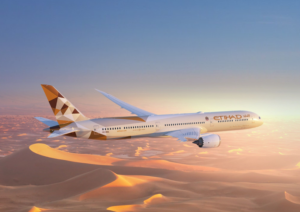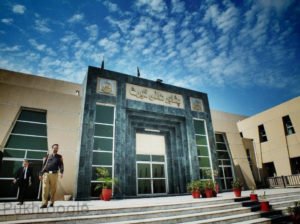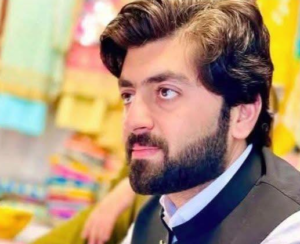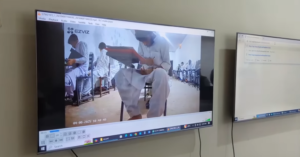 Official Facebook Fan Page Of Peshawar University
Official Facebook Fan Page Of Peshawar University
University of Peshawar at Glance
- Date of Establishment……………..Oct 30,1950
- Total Covered Area (in Acres)……………1045
- Faculty houses of various Categories……..196
- Academic Faculties………………………………06
- Post-graduate Departments/Institute………..30
- Constituent Colleges…………………………….04
- Federal Centres of Excellence………………. 05
- Constituent High Schools ……………………. 02
- Existing Enrollement……………………….14,060
- Overall Students Enrollment ………….104,479
- including Pivate Students
- Population of the Campus :(approx)….75,000
- Including staff & students
Employees
- Teaching Faculty ……………………………599
- Non Teaching Staff……. ………………..2094
Quaid-e-Azam Mohammad Ali Jinnah the founder of Pakistan adopts education in Khyber Pukhtonkhwa:
The British kept putting off the request of raising Islamia College to a university. The University had to wait till Independence in 1947. The great Quaid visited the College for the first time in 1928 and so fell in love with it that he would refer to it as ‘My College’ and adopted it as one of the three heirs to his rich fortune, along with Aligarh University and Sindh Madrassa (his own school) in 1939.
University came as a trophy from Quaid-e-Azam Muhammad Ali Jinnah to the students of the province, in recognition of the part played by them in the making of Pakistan. At Islamia College on 12th April 1948, he said:
“On this occasion the thing uppermost in my mind is the help that came to the movement and achievement of Pakistan from the students community, particularly from this Province. May I say that you played your part magnificently” and “Let me tell you that nothing is dearer to my heart than to have a university in the North-West Frontier Province from where the rays of learning and culture will spread through-out the Middle East and Central Asia. I, therefore, fully sympathise with your aspirations in this behalf and, provided you go the right way about it, you will get your university sooner than you can imagine”
The dream of the founders flowered and a broad-based, multi-disciplinary educational institution came into existence in 1951. The very complexion and spectrum of the University of Peshawar was overwhelming–education right from KG to Ph.D in a large variety of subjects from sciences, social sciences, technologies and professions on one integrated campus.
The University Today:
At present the University comprises of six faculties with 41 postgraduate departments, five centers, two centers of excellence, four colleges and two high schools. Student population on campus is over seventy thousand. The male-female ratio of student is 60:40. Current Ph.D enrolment is 162 and M.Phil 416; this includes 171 female students.
The existing faculty of 84 Professors, 69 Associate Professors, 129 Assistant Professors and 213 Lecturers, has 170 Ph.Ds and 215 M.Phils. We are sending our teachers abroad on various programmes. A large number of national / international seminars and conferences are organized. Special emphasis is given to sports, co and extra curricular activities. The University enjoys a good reputation and our graduates are contributing immensely both at home and abroad.
Academic Programs:
The academic programmes of the University of Peshawar are run by a teaching faculty of 447of various cadres, of which 84 are Professors. The University has six academic faculties: 1.Arts & Humanities 2. Islamic & Oriental Studies. 3 Life & Environmental Sciences. 4. Management & Information Science. 5. Numerical & Physical Sciences and 6.Social Sciences. and an Academy of Pashto Languag & Literature, Centres of Excellence in Geology, Physical Chemistry, Islamic Centre, Area Study Centre, Pakistan Study Centre. Besides , teh University of Peshawar has a Central Resource Laboratory, Nuclear Medicine Research Labortory (NMRL) a Computer Centre; a Central Library with a collection of over 2000,000, Books. One college for men, and women college of Home economics, and two secondry schools.
The University of Peshawar is a unique institution where educational facilities exist from nursery to Ph.D. Having demonstrated excellence in almost all disciplines, both in terms of teaching and research, the University of Peshawar has over the years attained the credit of being one of the significant universities in the Pakistan. It has academic links with numerous international research and academic institutions, including
- University of Massachusetts, Amherst, USA
- Utah State University, Logan, USA
- University of Exeter, UK
- Hiroshima University, Japan
- University of Glasgow, UK
Constituent Colleges :
1.Jinnah college for women:
The Jinnah College for women, formerly called University College for Women, was established in June 1964. The college provides educational opportunities to the University Employee’s children and young women of the Khyber Pakhtunkhwa on merit. It aims at producing enlightened and progressive young women. Maximum opportunities are provided for participation in extra-curricular activities such as debates, dramatic and literary competitions and so on. Educational trips and study tours are also arranged.
Its two storied building consists of classrooms, lecture-theatres, laboratories, a library with two reading rooms, an office and a hall. The college has a number of lawns, a botanical garden and a large playground. The class-rooms, lecture theatres and laboratories are well maintained, with heating arrangements for winters. The laboratories are properly equipped and the library has a good collection of up-to-date reference books, text books and books in specialized fields. The college hall, the Safia Hassan Hall, has a seating capacity of 300 students and is the venue for different functions. The playground attached to the college is used for inter-class and inter college tournaments and college sports.
2. Law College:
The Law College, University of Peshawar was established in 1950 and elevated to a Faculty in 1992. However, the existing faculties of the university were re-structured and Law College was placed under the Faculty of Social Sciences.
The College has an academic link with the University of Oslo, Norway, and has also signed an MOU with the IUCN Pakistan, under which it will have institutional co-operation with the latter in the area of Environmental Law.
The Human Rights Studies Centre is also part of the college and was established in March 2000 under the Government of Pakistan Human Rights and Mass Awareness and Education Programme, jointly funded by the NORAD and the Swiss Development Corporation. Its main objective is to develop curriculum for Human Rights as a subject at the Master’s level and to co-ordinate the activities/research regarding Human Rights at the National and Provincial level. It also aims at acting as a base for institutional co-operation between Human Rights Agencies at National and International level.
3. Quaid-e-Azam College of commerce:-
The Quaid-e-Azam College of Commerce was established in 1962. It has the distinction of having been established out of the funds bequeathed by the Father of the Nation, Quaid-e-Azam Muhammad Ali Jinnah. It is a premier institution of the North West Frontier Province, offering one year and two years Master of Commerce programmes. In both the programmes, the courses of study aim at imparting knowledge in the broad based principles and procedures of Commerce to develop a strong foundation for prospective managers in the functional areas of business. Besides, emphasis is laid on equipping students with appropriate skills to solve the organizational and operational problems faced by modern business entities. At present, the college offers specialization in Finance, Accounting, Marketing and Management, thus serving the need of Business Education within and outside the country.
4. College of Home Economics:
The study of Home Economics as a distinct discipline was introduced in the country soon after the emergence of Pakistan. Initially, a separate department, devoted to the subject, was set-up in 1954 by the University of Peshawar, in collaboration with Colorado State University, USA. The department was later upgraded to College status in 1963. It is one of the four colleges in Pakistan devoted to the study of Home Economics, for developing a complete education programme for female students to meet the challenges of a free society. The institution equips young women with the specialized knowledge in the field of interior design, textile design, small business management, teaching, and research.
This field of study extends opportunities for pursuing careers in any of the above professions. Therefore, it has acquired a special significance in moulding the female generation, providing them with an opportunity to study a unique blend of both science and art related subjects. It also opens up future avenues for personal, professional and social enhancement.
5. Institute of Education and Research:
The Department of Education was established in 1950, which was elevated to the Institute of Education and Research (IER) a faculty of education in 1980, however, the existing faculties of the university have been re-structured and IER is now placed under the Faculty of Social Sciences.
The IER provides B.Ed and M.Ed training to prospective and in-service teachers of secondary and higher secondary schools. At B.Ed level both theoretical and practical training are imparted, whereas the M.Ed trainees are theoretically strengthened regarding pertinent teaching issues. The training duration for both B.Ed and M.Ed is of one academic year.
The College has currently eight departments and thirteen faculty members. Housed in a separate building, it has all the necessary facilities of a teacher training institution. It has a spacious and well-stocked library, science and computer laboratories, seminar rooms, and lecture halls. Moreover all necessary efforts are made to ensure that the trainees’ stay is comfortable and productive.
CIVIC FACILITIES:
Cafeteria, Stores and Market :-
The main market is situated in the “Khyber House” on campus. This building also houses banks, two canteens, grocery shops, tailor shops, co-operative stores, and meat and vegetable shops. A spacious and modern cafeteria has been opened in the Teacher Student Centre. Some utility shops and a bookstore have also been opened in the Teacher Student Centre. A bigger market and a hospital are right across the road.
Teacher Student Centre:-
The Teacher Student Centre is the focal point of the University’s social, cultural and recreational activities. It provides services and facilities which support and enrich the academic programmes of the University. The Centre includes a cafeteria which provides simple good food at reasonable rates both for the students and teachers.
University Health Centre:-
The University Health Centre provides free medical aid to the students, University employees and their families.
Banks:-
A pay office of the National Bank of Pakistan was established in 1955. Later on it was raised to a full-fledged branch conducting all banking activities.
Branches of Habib Bank and United Bank are also functioning on the campus. They provide all banking facilities to customers.
Transport:-
The University has got its own fleet of buses which transport Students of the University. Besides, Intra Campus bus service is also available.
Campus Life:-
The Peshawar Campus:-
The University campus is situated about 10 kilometres North West from the city centre on the main Grand Trunk Road leading towards Torkham, the historical border town. It is located ideally on a picturesque site of over 1050 acres of land, 1029 ft. above sea level.
The University is the “mother” University of the North West Frontier Province, founded in Oct. 1950. It has expanded over the last fifty years and a number of buildings have been added. The total built up area of the campus is more than 1.5 million sq.ft. However, its original sprawling lawns and green tracts have been retained.
The academic ambience of the University is enhanced and enriched with the presence of such national organizations in the vicinity as the Pakistan Council of Scientific and Industrial Research, North Regional Laboratories; Academy for Rural Development; the Pakistan Forest Research Institute and College; the University of Engineering and Technology; the Agricultural University; Institute of Nuclear Medicine; and Khyber Teaching Hospital.
It is essentially a residential University with an approximate population of about 35000.
Grounds and Gardens:-
The University has a sprawling campus of 1050 acres. Grounds are levelled and turfed. Trees, bushes and hedges have been planted on an extensive scale in the residential bungalows and on either side of the roads.
Accommodation:-
Watch and Ward:-
There is an effective and vigilant arrangement for security on the campus. Besides the regular University personnel, there is constant patrolling on the campus by the camps peace corps.
The University has ten hostels, six for males with a capacity of 1949 and four for females with the capacity of 951. Beside these hostels, three new hostels are under construction two for boys and one for girls with a capacity of 300 each, and will hostels have now been constructed. These hostels are situated at a walking distance from the teaching departments. Females’ hostels are located in the vicinity of Jinnah College for Women and the College of Home Economics.
Since the residence in hostel is a privilege and not a right, therefore accommodation is offered to the deserving students subject to the availability of seats in the hostels.
The Bara Galli (Summer) Campus II :
The Campus II of the University of Peshawar is located at Bara Gali on the Abbottabad Nathia Gali – Murree Road, at a distance of approximately 30 kilometers from Abbottabad, having an altitude of 7700 ft above the sea level, and is spread over an area of 60 acres of land.
Bara Gali, one of the most beautiful valley resortas with dense forests, tall mountains and very pleasant climate, is the Campus II of the University of Peshawar since 1965. It is the nucleus of our academic and research activities particularly during entire summers, i.e. Mays to Septembers. Each summer around 20-25 International and National Seminars, Conferences, Symposia, Workshops, Training courses, etc. are held at this Campus, which are attended by more than a thousand national and international participants. Thousands of our students from the various teaching departments/schools/colleges/centres visit Bara Gali each year both in summers and winters, for various academic and research purposes.
Besides, all the students’ co-curricular activities, including shooting club, hiking society, adventure club, medical camps, cross-country/road running, sports mela, and so many other activities take place at the Bara Gali Campus. Each year the Independence Day is celebrated with traditional pomp and show. The whole campus is illuminated at night. Hundreds of men, women and children participate in the various events. Educational activities are a matter of routine at Bara Gali during the summer vacations, giving the University of Peshawar the unique edge that its academic activities do not go on a standstill during the summer vacations.
Co-Cullicular Activities
Games and Sports:-
Soon after the University of Peshawar came in existence, it was decided to organise University sports on Inter-Collegiate level. The first meeting was held on 24th November, 1950. In 1951 the constitution of University of Peshawar sports tournament committee was passed and Inter-Collegiate matches in Hockey, Cricket, Tennis, Volleyball, Basketball, Badminton, Relay Races and Athletics were held. And now due to the same strong base, the University players participate in the National and International games. In 1998, a student of this University won a silver medal in Athletics in South Asian Federation games. In the same year, our student participated in the World Inter University tournament held in Italy.
Social Work Programme:-
In the year 1953 a group of about thirty students of Islamia College (a constituent college of the University) undertook a campaign of anti-malaria DDT Spraying in association with the Public then Heath Department.
The Report of the Commission on National Education contained a recommendation that activities broadly along these lines should be compulsory for all students, and hence a glorious tradition was established. It is a requirement of the University that to earn a bachelors degree a student must have participated in social work for at least two months.In 1952 Islamia College began to supply volunteer blood donors for the Lady Reading Hospital and has continued to do so regularly.
In November 1963 the present Volunteer Blood Donor Service was inaugurated on a University basis and is rendering valuable social service.
Student Societies :-
Co-curricular activities are an important part of campus life. These include all university-based or university-sponsored cultural, educational, social and recreational activities not part of the regular curriculum but are an integral part of the living-learning community at the University of Peshawar. The University offers unique leadership and service opportunities in the form of these activities through the following societies and clubs:
- Khyber Literary Club
- Cultural and Dramatic Society
- The Science Society
- The Blood Donors’ Society
- The Adventure/Hiking Club
- The Sports Society
- The Peshawar University Rifles Association
- The Creative Art Society
- The Social Welfare/Awareness Club
The students groomed by the above societies and clubs have set high standards in the form of superior performances at provincial, national and international level.
University Central Library:-
The Central Library of the University of Peshawar was established in February 1951. The existing three storied building has an area of about 15,000 sq.ft. A block was added to the library in 1972.
The Central Library provides services and facilities to the staff and students. In addition to the usual stock, it houses a good Oriental Collection of valuable and rare books and manuscripts. The philanthropists of Khyber Pakhtunkhwa have donated a number of collections on local history and tribal customs and traditions.
Computers, Internet and e-mail facilities are available. The Library is being completely refurbished and soon its operations will be digitalised.
The Central Library has been declared an official United Nations Library, which is one of the seven UN Depository Libraries. Publications and official United Nations text are placed in this section. The purpose is to make current information about the activities of the United Nations available to as many as possible within the country.
Museum :-
The Sir Sahibzada Abdul Qayyum Museum of Archaeology and Ethnology, University of Peshawar, founded in 1989, opened to the Public in 1998, is one of the most important museums of the country. So far seven galleries display the cultural material of pre-history, proto-history, and medieval periods. Presently it has about five hundred Buddhist sculptures, about one thousand coins belonging to Indo-Greek, Scytho-Parthian, Kushan, Sassanians, Hindu, Shahi, Islamic and British periods. Besides thousands of stone tools and a huge quantity of Proto and historic pottery are in possession of the museum. The Ethnological gallery is in the course of arrangement while few specimens of ethnological material are on temporary display. The building of the Conservation laboratory was recently completed and acquisition of equipment is in process.







